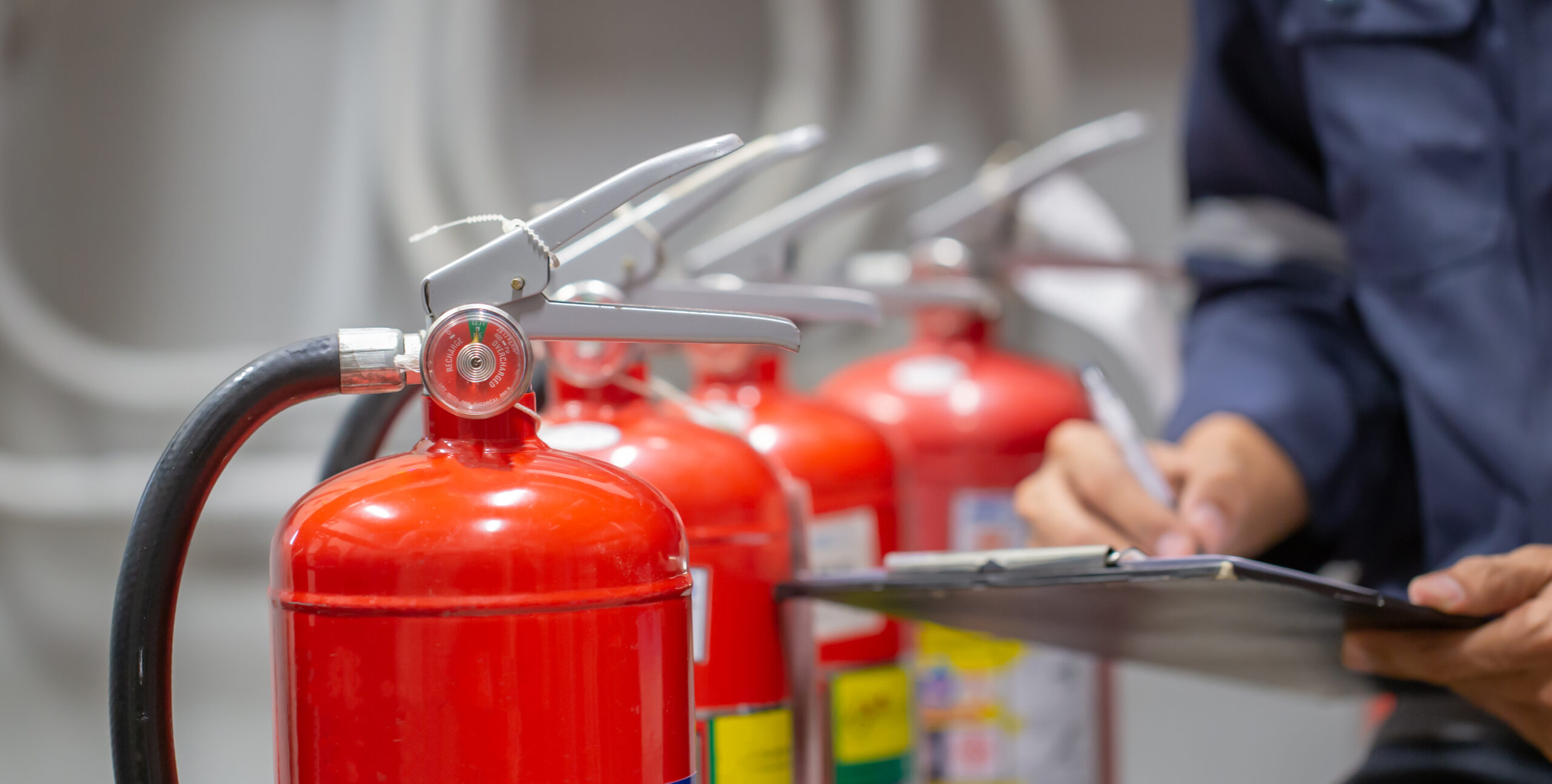Fires can have devastating consequences, causing loss of life and property damage. It is essential to prioritize the well-being of your employees by ensuring compliance with fire safety protocols. Properly selecting, placing and maintaining fire extinguishers can make a life-or-death difference for your employees.
Understanding OSHA standards for fire extinguishers, common non-compliance issues, and how prioritizing fire safety and compliance are crucial steps to keep your employees and company safe.
OSHA standards for fire extinguishers
Classification of fire extinguishers
OSHA classifies fire extinguishers based on what they are designed to combat.
The types include:
- Class A: Ordinary combustibles such as paper, cloth, wood, rubber and different plastics
- Class B: Flammable liquids such as oils, gasoline, some paints, lacquers, grease, solvents and others
- Class C: Electrical equipment such as fuse boxes, energized electrical equipment, computers and other electrical sources
- Class D: Metals such as powders, flakes or shavings of magnesium, titanium, potassium and sodium
- Class K: Kitchen fires involving combustible cooking fluids such as oils and fats
Understanding the appropriate type of fire extinguisher for specific fire hazards is critical in effectively minimizing damage. Each extinguisher is labeled with the specific type of fire it is designed to combat, making it convenient to position in the appropriate space withing your facility.
Placement and accessibility requirements
Employees should have easy and immediate access to fire extinguishers throughout the facility. They should be strategically placed, with unobstructed paths and clear visibility. Additionally, they should be securely mounted on brackets or stored in wall cabinets to comply with OSHA safety regulations.
Inspection and maintenance guidelines
Regular inspection and maintenance of fire extinguishers are needed to ensure they will function properly when faced with an emergency. Employers should conduct visual inspections monthly and keep a record of the findings.
According to OSHA, you should ask these six questions when inspecting your fire extinguishers:
- Is each extinguisher in its designated place, clearly visible, and not blocked by equipment, coats or other objects that could interfere with access during an emergency?
- Is the nameplate with operating instructions legible and facing outward?
- Is the pressure gauge showing that the extinguisher is fully charged (the needle should be in the green zone)?
- Is the pin and tamper seal intact?
- Is the extinguisher in good condition and showing no signs of physical damage, corrosion, or leakage?
- Have all dry powder extinguishers been gently rocked top to bottom to make sure the powder is not packing?
If the answer to any of the six questions is “no”, the fire extinguisher must be repaired or replaced immediately to be in compliance.
Common non-compliance issues
Despite the importance of fire safety and compliance, repetitive non-compliance issues continue to persist. If left unaddressed, they can pose significant risks to both employees and the overall safety of the facility.
Lack of proper training
Having fire extinguishers is important, but if employees don’t know how to use them, they could end up being useless in an emergency. It is imperative for employers to offer comprehensive training to employees, encompassing proper handling, activation and extinguishing techniques.
Clients of The Miller Group can find several resources on Zywave, including posters, quizzes, videos and online courses to help you train employees.
Improper supply of fire extinguishers
Not all fire extinguishers are designed to combat every type of fire. Failure to provide the appropriate extinguishers throughout the facility can lead to compliance issues for employers, posing significant risks to employee safety. To mitigate potential disasters, employers must ensure each area of the facility has the proper extinguisher where that specific hazard may occur.
Outdated or non-functional fire extinguishers
Over time, extinguishers can become non-functional if not properly maintained, resulting in a failure to operate during an emergency. Conducting proper, regular inspections are crucial to address potential issues before they become disastrous.
Prioritizing compliance for safety
Ensuring compliance with fire safety regulations goes beyond penalty avoidance. Tit is a crucial element in prioritizing the safety of employees. By proactively taking measures to guarantee the correct number, type, and placement of extinguishers, as well as conducting regular inspections, employers demonstrate their commitment to the well-being and safety of their workforce.
Ensuring compliance with standards for fire extinguishers is vital for employers. It protects employees, property and overall business operations. By understanding fire extinguisher classifications, implementing proper placement and accessibility, and conducting regular inspections and maintenance, employers can significantly reduce the risk of fire incidents.
Continuing to demonstrate a commitment to safety and compliance helps foster a positive work environment and instill peace of mind for employees. For more information on how to safeguard your employees and assets while meeting legal requirements reach out to a trusted advisor.

